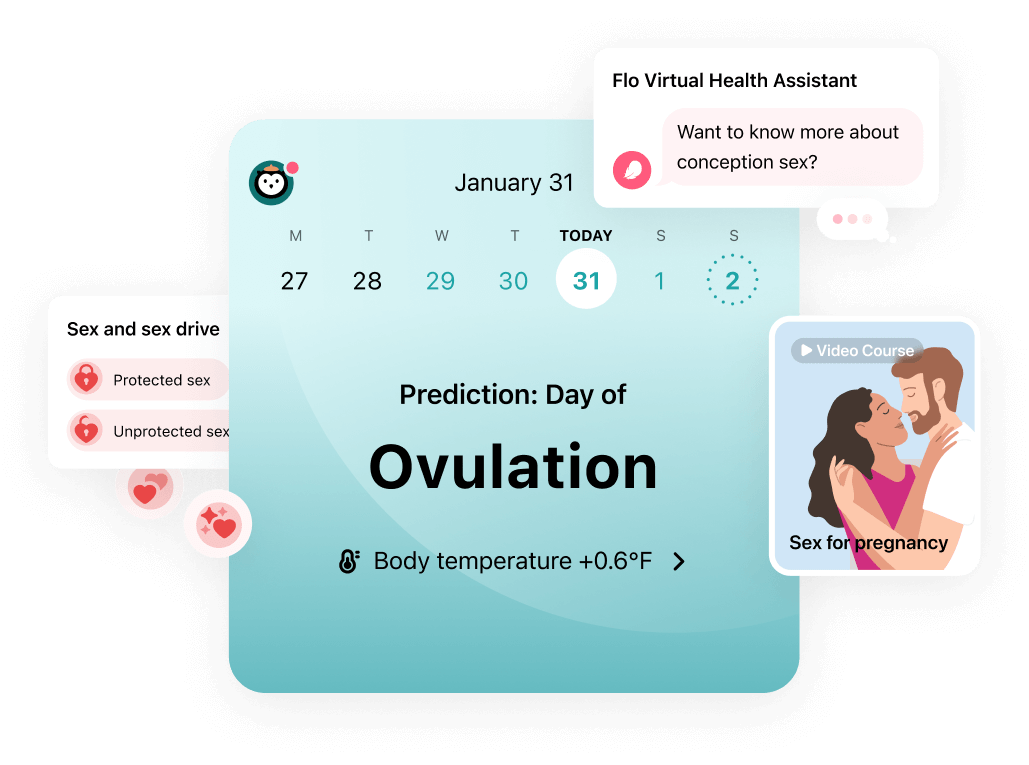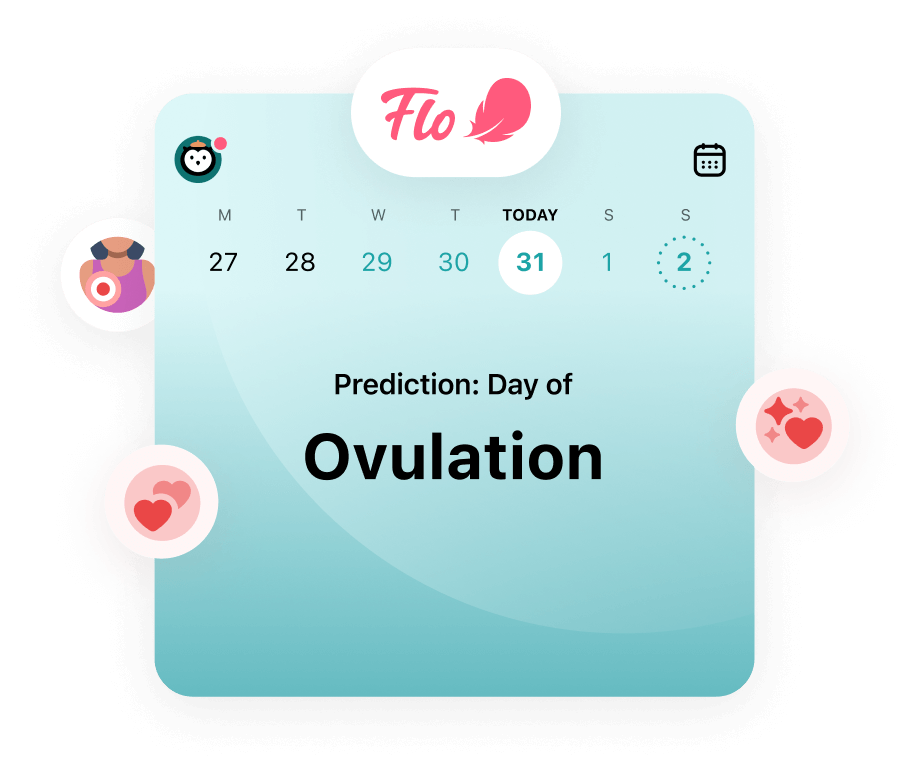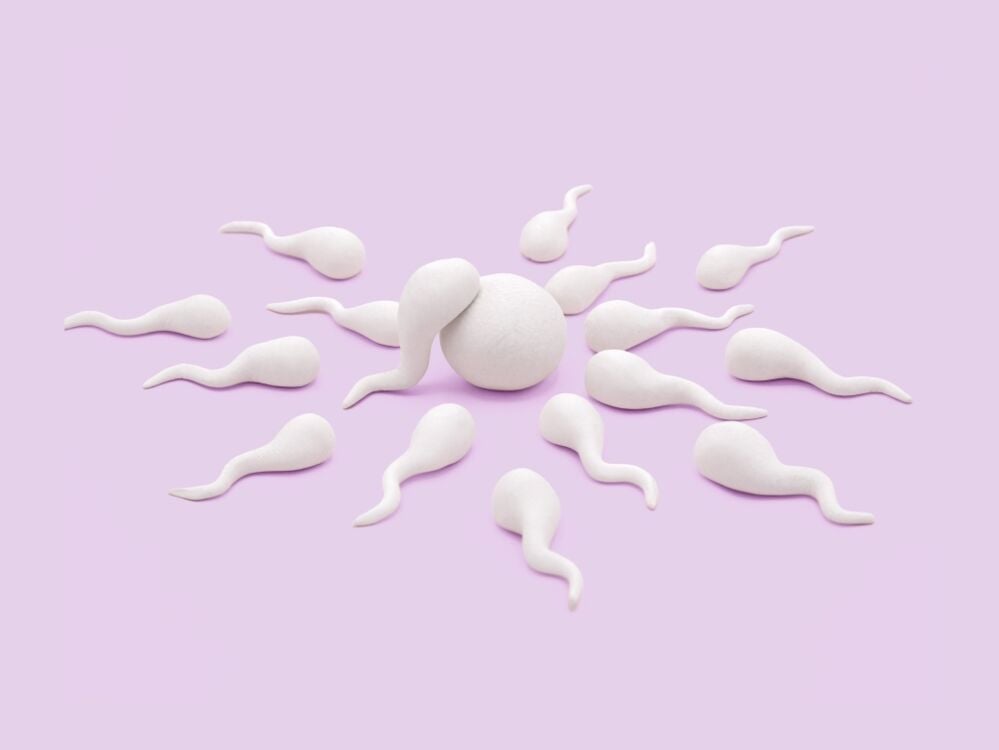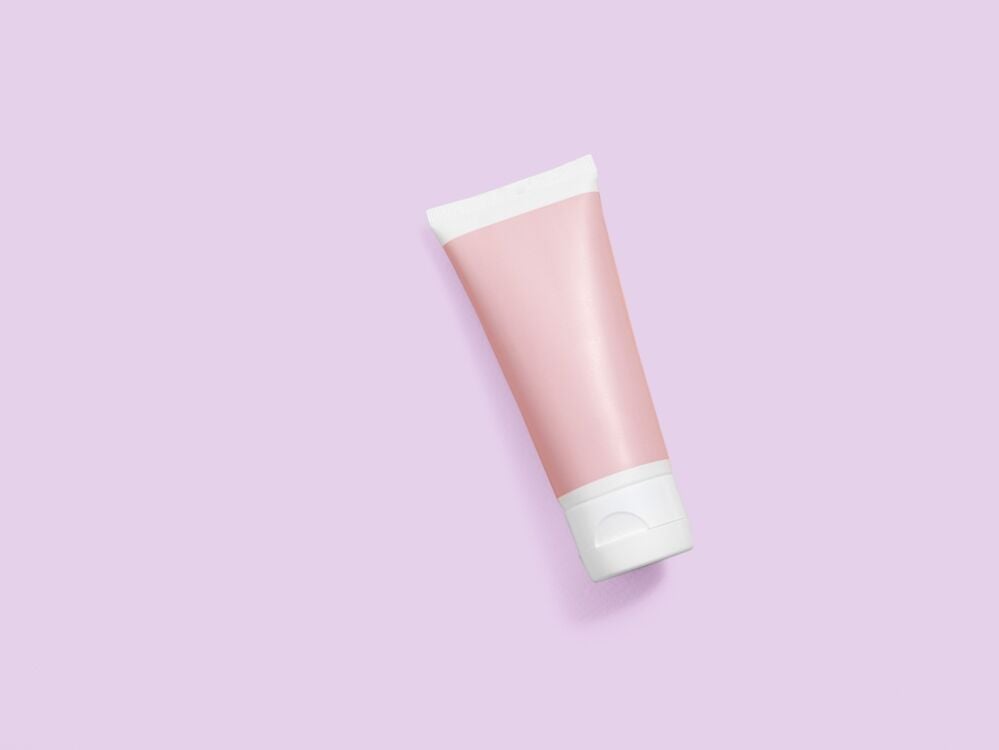You may have heard that certain sex positions increase the likelihood of pregnancy, but is this just a myth? Here, Flo explores medically backed ways couples can increase their chances of conception.
-
Tracking cycle
-
Getting pregnant
-
Pregnancy
-
Help Center
-
Flo for Partners
-
Anonymous Mode
-
Flo app reviews
-
Flo Premium New
-
Secret Chats New
-
Symptom Checker New
-
Your cycle
-
Health 360°
-
Getting pregnant
-
Pregnancy
-
Being a mom
-
LGBTQ+
-
Quizzes
-
Ovulation calculator
-
hCG calculator
-
Pregnancy test calculator
-
Menstrual cycle calculator
-
Period calculator
-
Implantation calculator
-
Pregnancy weeks to months calculator
-
Pregnancy due date calculator
-
IVF and FET due date calculator
-
Due date calculator by ultrasound
-
Medical Affairs
-
Science & Research
-
Pass It On Project New
-
Privacy Portal
-
Press Center
-
Flo Accuracy
-
Careers
-
Contact Us
Chances of Getting Pregnant With Woman On Top: The Science


Every piece of content at Flo Health adheres to the highest editorial standards for language, style, and medical accuracy. To learn what we do to deliver the best health and lifestyle insights to you, check out our content review principles.
If you’re trying to conceive, you’re probably wondering about the best sex position to get pregnant.
The woman-on-top position has often been tipped as a successful way to get pregnant because you can control the depth of penetration to make sure the cervix (the opening of your womb) is right up against the penis during ejaculation.
But are the chances of getting pregnant with a woman on top higher than other sex positions? We asked a gynecologist to share the science.

 Over
7.8M
ratings averaging
4.8/5
*
Over
7.8M
ratings averaging
4.8/5
*
Understand your fertility better with the Flo app
- Learn more about your fertility signals.
- Make sense of conception sex with help from our virtual Health Assistant.
- Log when you have unprotected sex (for your eyes only!).
 Over
7.8M
ratings averaging
4.8/5
*
Over
7.8M
ratings averaging
4.8/5
*

Do you want to learn the best time to get pregnant?
The Flo app can teach you all about trying to conceive

 Over
7.8M
ratings averaging
4.8/5
*
Over
7.8M
ratings averaging
4.8/5
*
Understand your fertility better with the Flo app
- Learn more about your fertility signals.
- Make sense of conception sex with help from our virtual Health Assistant.
- Log when you have unprotected sex (for your eyes only!).
Chances of getting pregnant with the woman on top: Orgasms, pregnancy, and position
We all want sex to be more pleasurable, and being on top may be one of the best positions for reaching orgasm because you have more control over the level of stimulation and pace.
One study by the University College Cork found that having an orgasm increases the chances of getting pregnant by as much as 15 percent. So, what’s the theory behind this? It’s thought that when the hormone oxytocin is released during orgasm, it stimulates muscles in the uterus, transporting the sperm to where it needs to be.
However, “there’s no evidence that the woman-on-top position is the best position to conceive,” says Dr. Anna Targonskaya, MD, Obstetrician-Gynecologist, and Medical Advisor at Flo.
Another common misconception is that the woman-on-top position may discourage sperm from traveling upstream. So, can you get pregnant being on top, or does gravity work against you? The truth is that, regardless of what position you use, within seconds of ejaculation, sperm make their way into the uterus, where they can fertilize an egg.
“Sperm has been found within the walls of the reproductive system after just one minute and within the uterine tubes within five minutes after insemination,” Dr. Targonskaya says. “As long as sperm gets to the vagina, no matter what position is used, a couple has a chance to conceive.”
Chances of getting pregnant with the woman on top: Can certain sex positions increase the chance of conception?
Now, let’s face it — choosing a different sex position may reignite passion in the bedroom, but can it improve the odds of getting pregnant? One study published in the Journal of Sex and Marital Therapy used MRI scans to see whether missionary position or doggy style do indeed get sperm closer to the cervix. The researchers confirmed that, yes, the tip of the penis reaches the cervix in both positions — although the rear-entry position is deepest.
But there’s still currently no scientific evidence to suggest that these positions will make you more likely to conceive. “Sex positions don’t increase the chances of getting pregnant,” says Dr. Targonskaya. “Sex shouldn’t be perceived as a job that you do to get pregnant. Instead, it should be pleasurable, fun, and relaxing.”
In fact, a recent report by the Brazilian Federation of Gynecology and Obstetrics Associations Committee on Endocrine Gynecology noted that sex positions don’t increase conception rates. The same study also found there’s no science behind postcoital urban legends like lying on your back after sex and increased chance of pregnancy.
Take a quiz
Find out what you can do with our Health Assistant
Chances of getting pregnant with the woman on top: How can you increase your chance of conceiving?
Here are some scientifically backed ways that couples can increase their chances of conception:
Have sex on your fertile days
The best time to conceive is during the most fertile time in your cycle. These are the days leading up to ovulation, which is when a mature egg is released from one of your ovaries into your uterine tube. And, if sperm is present around the time of ovulation, the egg has a chance of being fertilized.
Your most fertile day is the day of ovulation. Having sex up to five days before the egg is released can also lead to pregnancy because sperm can live for up to five days inside your body.
So, how do you know when ovulation occurs? If you have a 28-day menstrual cycle that runs like clockwork, ovulation typically occurs about 14 days before the start of your next period. But for most of us who have regular cycles that are longer or shorter than this, ovulation generally occurs between day 10 and day 16.
“It’s best to plan sex around ovulation,” says Dr. Targonskaya. “For most people, there are six days when you can get pregnant — five days before ovulation and on the day of ovulation itself, where the likelihood of pregnancy is highest.”
You can use a period tracker like Flo to help figure out your fertile window. If you’re in tune with your body, you may be able to detect ovulation symptoms a few days before ovulation. Vaginal discharge will become more clear and stretchy — kind of like raw egg whites. You may also experience mild pelvic or abdominal pain and breast tenderness.

Have sex more often, if you want to
“As long as you’re in the mood, try to have sex every day or every other day during your fertile window to boost the chances of pregnancy,” says Dr. Targonskaya.
You may have heard the myth that ejaculating every day can lower sperm counts. However, there is little evidence to suggest that this is the case. In fact, one study published in Fertility and Sterility found the opposite: Men with a low sperm count who ejaculated daily had a higher than normal sperm concentration and enhanced motility (sperm movement).
Make healthy lifestyle changes
Leading a healthy lifestyle may improve the chances of having a baby. Some healthy habits to adopt as a couple to improve your overall health when trying to conceive include:
- Cutting down on alcohol and caffeine
- Stopping smoking
- Maintaining a healthy weight
- Eating a healthy diet
- Staying fit and active
One study by the University of Queensland found that making lifestyle changes — including being more active, quitting smoking, and eating well — in the months before getting pregnant can also lead to fewer complications at birth.
Use the right lube
Lubricant has been found to reduce the motility of sperm, making it harder for it to reach the egg. If you are trying to conceive, choose a sperm-friendly lubricant. Dr. Targonskaya recommends using mineral oil, canola oil, or hydroxyethyl cellulose-based lubricants (K-Y is one brand to look for).

Chances of getting pregnant with the woman on top: When to seek help if you are struggling to conceive
“If you’re a healthy person — younger than 35 — and have regular sex without contraception, doctors usually advise to wait at least a year before seeking professional advice if there are no apparent fertility problems,” Dr. Targonskaya explains. “If you’re 35 or older, you can schedule an appointment with your health care provider after six months of trying to conceive.”
If you’ve been diagnosed with or suspect you are experiencing a condition like endometriosis or polycystic ovary syndrome, schedule an appointment for medical care. A review published by the Journal of the American Medical Association highlighted that you may be able to seek fertility services earlier than one year.
If you have any concerns about your fertility, it’s best to make an appointment with your doctor or health care professional. If necessary, they can refer you to a fertility specialist who can run some simple tests to figure out what’s going on.
Some health conditions and symptoms can increase your risk of infertility. If you’re under 35 and you or your partner have experienced any of these conditions or symptoms, it’s a good idea to schedule an appointment just to be sure:
Pelvic inflammatory disease (PID)
- Endometriosis
- No menstrual periods or irregular periods
- More than one miscarriage
- A history of testicular trauma, chemotherapy, or hernia surgery
Chances of getting pregnant with the woman on top: The takeaway
If you’re trying to get pregnant, you may be wondering whether certain sex positions can help you conceive. In short — no. There’s little scientific evidence to suggest that there’s any sex position — including woman-on-top — that will improve your chances of conceiving.
The good news is that any position that gets sperm anywhere in the vagina can lead to pregnancy. Regardless of who’s on top, what’s important is that you find the sex position that you’re most relaxed in.


Hey, I'm Anique
I started using Flo app to track my period and ovulation because we wanted to have a baby.


The Flo app helped me learn about my body and spot ovulation signs during our conception journey.


I vividly
remember the day
that we switched
Flo into
Pregnancy Mode — it was
such a special
moment.
Real stories, real results
Learn how the Flo app became an amazing cheerleader for us on our conception journey.
References
“Measuring Sperm Backflow Following Female Orgasm: A New Method.” NCBI, www.ncbi.nlm.nih.gov/pmc/articles/PMC5087695. Accessed 11 Nov. 2021.
“The Dynamics of Rapid Sperm Transport Through the Female Genital Tract.” NCBI, pubmed.ncbi.nlm.nih.gov/8671281. Accessed 11 Nov. 2021.
“Magnetic Resonance Imaging (MRI) of Sexual Intercourse: Second Experience in Missionary Position and Initial Experience in Posterior Position.” Taylor & Francis, www.tandfonline.com/doi/abs/10.1080/00926230252851203. Accessed 11 Nov. 2021.
“Increasing the Chances of Natural Conception: Opinion Statement from the Brazilian Federation of Gynaecology and Obstetrics Associations Committee on Endocrine Gynaecology.” Research Gate, www.researchgate.net/publication/331138446_Increasing_the_Chances_of_Natural_Conception_Opinion_Statement_from_the_the_Brazilian_Federation_of_Gynecology_and_Obstetrics_Associations_Committee_on_Endocrine_Gynecology. Accessed 11 Nov. 2021.
“What Is Ovulation?” American Pregnancy Association, 16 July 2021, americanpregnancy.org/getting-pregnant/understanding-ovulation. Accessed 11 Nov. 2021.
“Fertility Awareness-Based Methods of Family Planning.” ACOG, www.acog.org/womens-health/faqs/fertility-awareness-based-methods-of-family-planning. Accessed 11 Nov. 2021.
Reed BG, Carr BR. The Normal Menstrual Cycle and the Control of Ovulation. [Updated 2018 Aug 5]. In: Feingold KR, Anawalt B, Boyce A, et al., editors. Endotext [Internet]. South Dartmouth (MA): MDText.com, Inc.; 2000-. Available from: https://www.ncbi.nlm.nih.gov/books/NBK279054/ Accessed 11 Nov. 2021.
“How Can I Tell When I’m Ovulating?” Nhs.Uk, 4 Feb. 2020, www.nhs.uk/common-health-questions/womens-health/how-can-i-tell-when-i-am-ovulating. Accessed 11 Nov. 2021.
“Relationship Between the Duration of Sexual Abstinence and Semen Quality.” Pub Med, pubmed.ncbi.nlm.nih.gov/15950636. Accessed 11 Nov. 2021.
Carson, Sandra Ann, and Amanda N. Kallen. “Diagnosis and Management of Infertility.” JAMA, vol. 326, no. 1, 2021, p. 65. Crossref, doi:10.1001/jama.2021.4788. Accessed 11 Nov. 2021.
History of updates
Current version (14 March 2022)
Published (09 December 2021)
In this article

Get your personal guide to fertility
-
Learn how to read your body's ovulation signals
-
Find daily conception tips from our experts
-
Chat with others who are trying to get pregnant




